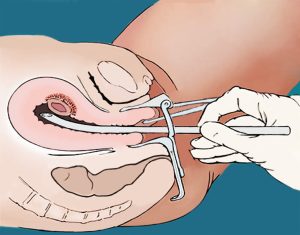- 30 January 2024
- 97
Abortion Procedures: A Simple Guide to Different Types

Introduction
When faced with the decision of abortion, understanding the various procedures, associated costs, and what to expect during recovery is crucial. This comprehensive guide aims to provide a detailed exploration of different abortion methods, their costs, pain management options, and the post-procedure recovery process.

Types of Abortion Procedures
1. Medical Abortion
- Overview: Medical abortion involves the use of a prescription pill, often known as RU-486 or mifepristone.
- Suitable for: This option is viable during the early stages of pregnancy and can be administered at home.
- Comparison: The specific procedure is contingent upon the pregnancy stage.

2. Vacuum Aspiration (First Trimester)
- Overview: This outpatient procedure, commonly referred to as suction abortion, is prevalent in the first 12 to 13 weeks of pregnancy.
- Preparation: Patients are required to fast before the procedure, undergo a physical examination, and provide relevant medical history.
- Pain Management: Local anesthesia is typically administered, with additional options such as oral medication or sedation based on patient preference.
3. Dilation and Evacuation (Second Trimester)
- Overview: Dilation and evacuation, or D&E, becomes a common choice for pregnancies beyond 12 weeks.
- Preparation: Cervix dilation is a crucial step, often involving laminaria sticks and medications.
- Procedure: This method combines suction with the use of forceps and a curette for a more extensive evacuation process.
- Aftercare: Post-procedure care includes medications to contract the uterus and reduce bleeding.
4. Dilation and Extraction (Late-Term)
- Overview: Reserved for pregnancies with serious complications, dilation and extraction (D&X) follows similar steps to D&E.
- Sedation: General IV anesthesia is often utilized for patients undergoing this specialized procedure.

Before the Procedure
When scheduling an abortion appointment, healthcare providers typically provide specific instructions over the phone. Given that in-clinic abortions are considered surgical procedures, fasting is often required starting around midnight the night before the scheduled procedure.
Upon arrival at the clinic, patients complete paperwork and undergo a pre-abortion workup. This includes a physical examination, pregnancy test, blood test, screening for sexually transmitted infections, and, if necessary, additional tests. Many providers use an ultrasound to confirm pregnancy stage and check for abnormalities in the uterus, fetus, or placenta. This information is vital for determining the most suitable procedure, a decision discussed during a counseling session with the doctor.
Pain Management
Patients are informed about various pain management options during the procedure. For in-clinic abortions, local anesthesia is common, numbing the cervix while the patient remains awake. While ibuprofen often suffices for pain relief, additional oral medications may be offered to calm or mildly sedate the patient. For those preferring heavy sedation, an IV-administered sedative may be available.
What Happens Next?
Post-procedure, patients rest at the clinic under supervision for approximately 30 minutes. Recovery continues in a designated area until the patient is ready to head home. If sedation was administered, a companion is needed for transportation. Patients receive a prescription for antibiotics. Treatment for other health problems
Expectations for the following days include cramping and light bleeding for up to two weeks, manageable with over-the-counter or prescription painkillers. Rest is advised, especially after dilation and evacuation (D&E) or dilation and extraction (D&X), and heavy lifting is discouraged for a few days. Resuming sexual activity or tampon use may be restricted for up to a month, and any severe pain, fever, or excessive bleeding should prompt immediate contact with the healthcare provider or emergency contact.
Follow-up appointments, scheduled within one to four weeks, allow healthcare providers to ensure physical recovery and the absence of pregnancy.

Conclusion
A well-informed decision about abortion involves understanding the available procedures, associated costs, and post-procedure care. Seeking guidance from healthcare providers, exploring financial assistance options, and prioritizing recovery are crucial steps in this challenging journey.

